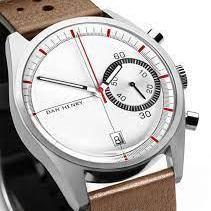Technique for pinion alignment for reassembly
-
Recently Browsing
- No registered users viewing this page.
-
Topics
-
Posts
-
The bezel feels slightly loose over the case. There wasn't a gasket but could the crystal be expanded over the lip in the caseback and then the bezel pressed over the crystal? Actually this sounds like a possibility. This is a great forum. https://www.watchrepairtalk.com/topic/20587-old-orient-case/?do=findComment&comment=173918
-
By rjenkinsgb · Posted
The cleaner smells of ammonia, but it's not too bad; just keep it covered as far as practical. I use an ultrasonic machine on a kitchen worktop. The rinse does not smell strongly, it's vaguely like paraffin. I did check the safety data sheets before buying it & it's said to be safe in normal use. My dedicated watch cleaning machine is still a work-in-progress; four position linear, based on 1L kilner jars for station spacing, to have a heated dryer in position 4. It uses standard, readily available parts as far as possible to make it easy to reproduce, plus 3D printed bits for the custom parts. (The horizontal drive motor is out at the moment while working on the stepper drive software) -
I disassembled the hands of my Citizen Pilot Super Titanium Radio Controlled AS2031-57E a couple of times. The second time because on the first attempt i evidently did not push the hour hand well and in practice it was not well fixed and moved receiving even small bumps. After the second attempt everything seems to be ok. Except that i have the impression that giving a little more sustained blows on the wrist, the hour hand still has a slight movement, in the order of half a second or less. It is a normal, topical and usual thing about this movement, which, i remind you, is exclusively electronically managed, each hand independently, a clearance in the movement that it has of its nature, or it may depend on the hand is not yet well attached to the pin and should perhaps be replaced because the hole has slightly enlarged?
-
By Neverenoughwatches · Posted
This is something a lot of beginners and amateurs struggle with Nev, being able to remove the staff without distorting the hole of a non steel balance wheel. Having the right tools to do this safely and effectively is not easy. Even with something useful it takes a lot of practice, i spent two days not so long ago practicing cutting away the balance wheel hub of a staff using a 25mm diamond wheel. I didnt manage to do it once without catching the underside of the wheel. -
Then you should have something that prevents the case from moving. I just bought one of these Seiko S-210 but haven't received it yet.
-







Recommended Posts